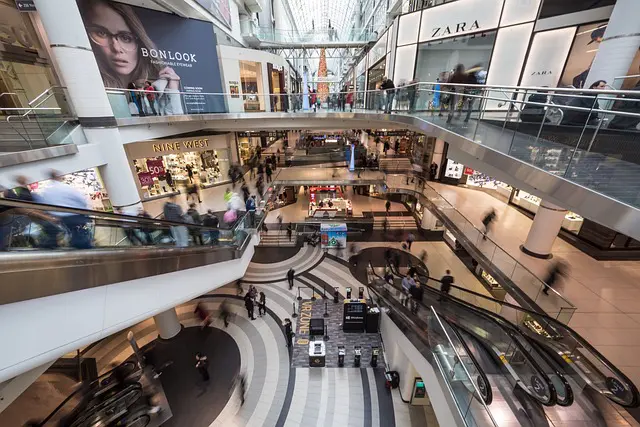
A Renaissance in the American Shopping Mall?
Commercial real estate is a diverse asset class. Its various sectors experience different trajectories. While certain sectors, such as multifamily housing, have thrived before and during the pandemic, the retail sector, particularly shopping malls, has faced major headwinds. The surge in e-commerce looked poised to make malls a thing of the past.
Over recent decades, the retail sector has experienced a steady decline, with the number of malls in the US decreasing from around 2,500 in the 1980s to approximately 1,150 today. Typically, malls involve multi-tenant structures anchored by major retailers. The decline of iconic brands like Sears, JCPenney, Nordstrom, and Macy’s took many malls with it. Forecasts as recent as June 2023 suggest that 87% of large shopping malls could close within the next decade.
Despite these challenges, however, there is a resurgence underway as innovative owners and developers redefine the purpose and strategic positioning of malls. Class A malls, representing the top tier, have experienced a rapid rebound since the pandemic. Occupancy rates rose to 95.1% by 2022, almost level with pre-pandemic levels, and retail sales at malls grew by 11% from 2021 to 2022, according to Coresight Research. In Q1 2023, malls accounted for 12.9% of US consumer spending, generally outperforming other retail formats per square foot. Furthermore, the lack of new mall development ensures that existing malls face no immediate threat of competition.
As in-person spending rebounded, e-commerce growth remained flat in 2023, according to Digital Commerce 360. Moreover, some e-commerce brands find online customer acquisition costs comparable to brick-and-mortar stores. This has led to a trend where direct-to-consumer brands founded on e-commerce are now developing a physical retail presence. Examples include the apparel brand Untuckit and the travel brand Away. These businesses have noticed that physical locations contribute to the growth of online businesses, attracting new customers to the brand and helping maintain existing ones. Decisions to open physical locations are often based on the idea that brand value is enhanced by being near other high-value brands.
Despite predictions of the decline of traditional malls, communities and developers are innovating, introducing pop-up stores and transforming malls into mixed-use centers with live/work/play elements. Developers repurpose malls into multifaceted structures, for example, replacing anchor stores with hotels or revitalizing large spaces with retail and entertainment venues. Repurposing extends to leasing space to areas such as healthcare and educational facilities.
An example of a top-tier mall pursuing innovative restructuring is our local Phipps Plaza, owned by Simon Property Group. In 2022, Phipps Plaza underwent renovations, adding a Nobu Hotel and restaurant, a LifeTime athletic facility, and Class A office space. While Class B and C malls still face hurdles in retaining profitable tenants, Class A malls such as Phipps are expected to remain resilient.
Major brands increasingly recognize the importance of maintaining an online and physical presence. Despite the challenges presented by the interest rate environment, continuous innovation by owners and developers is driving the transformation of high-quality American shopping malls into community-centric, people-focused spaces.
Caroline McInerney
